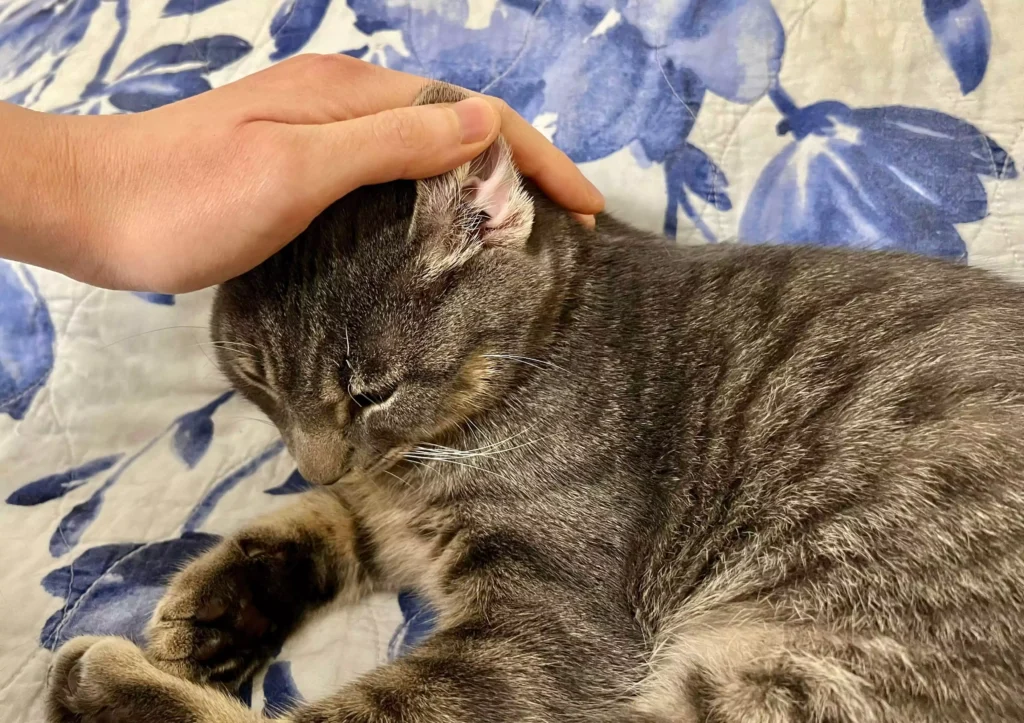Veterinary Tui-na By HolisticalVets
Available now!
To get started and request an appointment with HolisticalVets LLC, please click here.
What is veterinary Tui-na?
Tui-na is a type of medical therapy and complete bodywork system found in TCVM (Traditional Chinese Veterinary Medicine) that has been around for thousands of years.
It involves a mixture of acupressure, chiropractic, and muscle manipulation techniques and it stands out from other bodywork systems because it is based on actual pattern diagnoses and treatment is determined by the diagnosis made.
Tui-na can be used together with acupuncture, food therapy, and herbal therapy and it can also be used alone. It’s also the perfect substitute for acupuncture for pets that aren’t big fans of needles!
Another perk? Some techniques can be taught to you, so you can perform Tui-na on your pet in between appointments!

Is Tui-na safe?
When performed by a veterinarian that’s specially trained in veterinary Tui-na and the necessary precautions are taken (for example, not stimulating points that may negatively affect a pregnancy), Tui-na is usually very safe and can be used on many different kinds of species and across different ages, from pediatric to geriatric. If needed, it can also be combined with conventional/Western medicine to help pets get the best of both worlds medically.
How is Tui-na different from conventional chiropractic techniques?
While chiropractic therapy focuses on local areas (usually the spine and limbs), Tui-na focuses on the whole body. Tui-na also has more than 200 different techniques, while chiropractic therapy is mostly focused on adjustment, stretching, and pinching.
Does Tui-na hurt?
Nope! Most pets will be so relaxed, they’ll fall asleep during treatment!

Image taken by @fishnegg (Instagram)
What can Tui-na be used for?
Tui-na can be effective for many disorders and problems, including (but not limited to):
- Musculoskeletal (e.g., arthritis, joint diseases, back pain, muscle soreness or spasms, sore feet, weakness, mobility problems, tendon/ligament injuries, etc.)
- Gastrointestinal (e.g., diarrhea, vomiting, constipation, nausea, ulcers, etc.)
- Neurological (e.g., IVDD, seizures, nerve paralysis, etc.)
- Skin problems (e.g., ear infections, lick granulomas, allergies, inability to sweat, etc.)
- Respiratory (e.g., asthma, coughing, sneezing, heaves, etc.)
- Diseases affecting organs (e.g., kidney disease, incontinence, heart disease, hypo- or hyperthyroidism, liver disease, eye problems, Cushing’s disease, Addison’s disease, fertility problems, etc.)
- Behavioral problems (e.g., anxiety, stress, sleeping problems, etc.)
- Autoimmune diseases
- Cancer, quality of life, hospice care
- Slowing down of disease
- Preventative therapy
- Performance enhancement for competitions
- And so much more!
Are results guaranteed with Tui-na? If so, how soon can I expect improvement?
Often times, holistic medicine and treatments require more time and effort from everyone involved and since holistic medicine is not a quick fix, overnight resolution is uncommon. Most conditions need 4-6 treatments before the effectiveness of the treatment can be accurately assessed (even though it can be common for pet owners to notice an improvement after the first treatment).
While conventional/Western medicine may provide faster results, holistic medicine helps set the foundation and attempts to balance out the scales in hopes of improving health and providing a better quality of life. Regardless of the type of medicine used, whether holistic or conventional, every animal is unique and may or may not respond to treatment in different ways and just like with conventional/Western measures, there are no guarantees in medicine.
Holistic medicine can be helpful for a multitude of problems that may afflict pets (and secondarily, their owners). These problems are not just limited to diseases and illnesses affecting muscles, bones, and nerves, but also those that affect behavior, the skin and other organs, the immune system, and so much more.
While some conditions may be able to be resolved completely, other times (just like in Western medicine) there are afflictions that cannot be resolved (or if they can be, only partially). Often times, especially if the condition is chronic or at or near end-stage, the goal is to simply extend the pet’s quality of life and to slow down or possibly halt the progression of the disease/illness for as long as feasibly possible.
